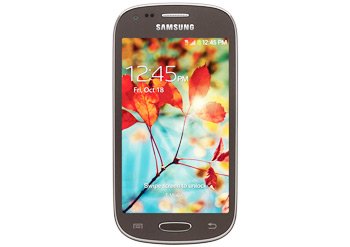How to Root Galaxy Light SGH-T399
Galaxy Light SGH-T399 faces a great set of exciting additions. They are something which your phone has been missing out on. And all of them, with no doubt, will enable you to have the handset you’ve always wanted to have. These goodies are available if you root the device with SRSRoot app!
Your Galaxy Light T399 is one of the many smartphones that are compatible with the app we have for today. Which is why you should look forward to this guide the most. You have, below, the steps that provide root access for your handset.
JDQ39.T399UVUAMJ4 is the Build ID that we used for the rooting. But if you want, you can make use of another Build ID.
The rooting your phone will go through now delivers some really nice features, tweaks and the like. If you are already looking forward to them, we should unveil them now.
The benefits of this method
We’ll begin by mentioning the addition of admin and superuser permission together with root-only apps. These two are joined by custom ROMs and battery options. Customization tweaks and new features are delivered next. The smartphone doesn’t end up with an erased OS. The SRSRoot works with all the available Android versions; which includes your phone’s 4.2.2 Jelly Bean variant.
Released last year, your handset’s CPU is quad-core 1.4 GHz. The rooting improves its general speed and makes it run faster. Apart from that, the new app functions as an unrooting tool, as well. An SRS Server is what powers this rooting tool. The latter is fully compatible with many brands.
If your handset craves an upgrade, you can perform one. But if you do that, you will get some of your device’s stuff damaged. When it comes to root access, the update will quickly revoked it. The system partition will also be damaged. Nothing will be affected when it comes to other elements; which includes the phone’s internal / external SD cards and important data. If the handset isn’t updated but only rooted, the warranty is going to be revoked.
Prerequisites
If you were to consider rooting your Samsung SGH-T399, you’d have to also consider these:
- generate one or more regular backups for the phone’s most crucial content;
- then create a full NANDroid backup with the help of these instructions;
- to experience a successful rooting, your notebook must be running Windows;
- download, on your notebook, USB drivers for your smartphone;
- check and see whether your device is in need for a full charge for its battery;
- if that should be the case, have it fully charged;
- enable the smartphone’s USB Debugging;
- have the notebook’s security software turned off;
- every single one of the security programs running on the notebook you use must be disabled.
Step by step instructions
- The action that starts today’s procedure is the following: get the SRSRoot software on your notebook. The app will wait for you at this address.
- Download it from there by clicking a download button shown on the main page. You’ll have to install this file on the notebook and then proceed to launch it.
- After you click on Settings, tap Unknown Sources; the latter’s under the option you just clicked on. When done, apply this step: plug the Galaxy Light SGH-T399 to the notebook.
- You will have to provide this connection via the handset’s USB cable. Usually, this doesn’t take long. If no plugging is on the horizon, do this: repeat the steps.
- When the devices are plugged to each other, you’d better start the rooting. This is how the procedure has to be started: tap Root Device (All Methods).
- On average, this part needs 13 minutes to end. No more than 15 minutes should pass till the procedure’s over. If the process doesn’t end in the time limit we set, you should go ahead and repeat the steps.
- [sc name=”banner-jos”]After that time is finally over, you get to restart the handset and then unplug it from the notebook. To reboot the SGH-T399, in case you don’t know how that works, do this: tap an option called Reboot System Now.
The fact that your handset restarts soon after that means the following: you have just ended up with a rooted smartphone! Discover it step by step and then decide if you should keep root access on it or not. If you don’t want to, the SRSRoot has to be used.
A comment section is right under this guide. Use it if there are questions you want to ask regarding the procedure.





